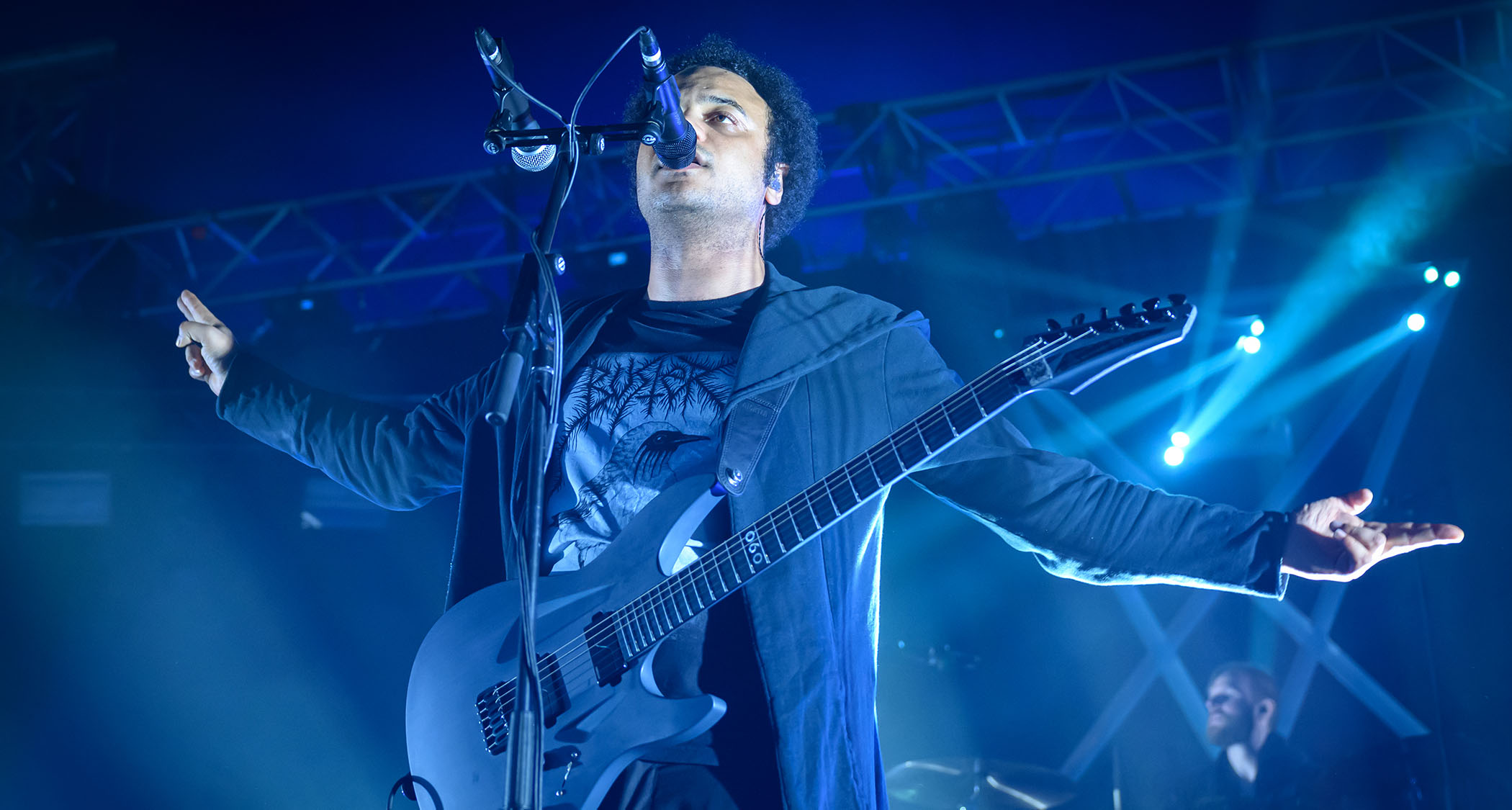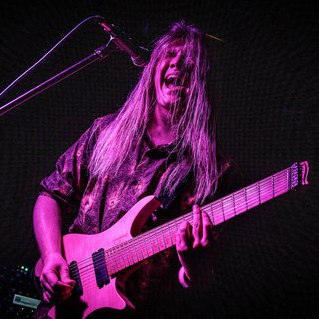“Contrast is more important than the tone itself. If you just have the hardest, heaviest tone as a constant you get numb to it”: How Zeal & Ardor are adding light and shade to black metal with plastic guitars, chunky strings and unlikely tube amps
By taking black metal into a more avant-garde plane, Manuel Gagneux and Tiziano Volante are stretching the definition of heavy. They reveal the tones and tunings behind their evolution

Manuel Gagneux began writing music as Zeal & Ardor with a point to prove. A regular on 4chan forums around 2013, he was taking requests to mash genres together when one user, with a racist undercurrent, suggested he mixed black metal with Black music. Born to an African mother and Swiss father, he didn’t take the comment lightly, but stumbled upon something unique in the process.
The aggression of black metal proved a counterpoint, in equal parts tasteful and forceful, to African-American spirituals, blues, soul, trap and hip-hop. Suddenly, what started life as a retaliation, of taking pride in the diversity of sounds black musicians have forged throughout the history of recorded music, the project took on a life of its own.
From his home in Basel, Switzerland, Manuel created Zeal & Ardor’s debut album Devil Is Fine as a one-man band, singing, playing all instruments and programming the drums. Self-released in 2016, the album was re-released with label backing – the UK-based MVKA – having garnered a cult status on Bandcamp.
For live performance, Manuel put a band together, but on the two albums that followed, only drummer Marco Von Allmen was involved in the recording, as the multi-tasking Manuel dived deeper into avant-garde and dark, Tom Waitsian territories on 2018’s Stranger Fruit, and then took an altogether more progressive and aggressive direction on 2022’s self-titled Zeal & Ardor.
With each record, Manuel has pushed the boundaries of what Zeal & Ardor is, the music becoming catchier and more technical, simultaneously more destructive and delicate.
But now, his MO has changed. With new album Greif – named after by a mythical griffin-like creature from Swiss folklore that stands as a symbol opposing elitist oppression – Manuel invited the band into the studio, embracing collaboration and, in particular, harnessing the magic of his partnership with co-guitarist Tiziano Volante. The former may be the brains and the vision behind the band, but Tiziano is arguably their secret weapon.
“Our roles in the band are split generally between the hard stuff and the stuff you can play while singing,” Manuel says. “It’s funny – we kind of got into this harmonious thing where we don’t really talk about who plays what anymore. I just record the demo and appear at rehearsal and Tiziano can essentially play everything on his own. He’s like, ‘Sure, you can take something – you’re part of it, too.’”
All the latest guitar news, interviews, lessons, reviews, deals and more, direct to your inbox!
As Tiziano puts it: “I try to keep Manuel’s back as free as possible so he has the freedom to either lock in with me, or play the lead lines, which I think are really important to the band’s sound. I’m the glue between the bass and the leads.”

Having penned the first records on a Charvel Pro Mod Style 1, Manuel has since transitioned to an Aristides Raw 060. “The Charvel is my second guitar now,” he explains. “I play the Floyd Rose just with my palm – the whammy bar is kind of annoying. But the Aristides – just the gain on that thing is amazing. It doesn’t fluctuate in tuning if you’re going from a hot country to a cold country, because it’s just plastic.”
Tiziano, meanwhile, wasn’t content with just grabbing an off-the-shelf axe. Instead, he linked up with Swiss luthier Aeschbach Guitars for a custom build that delivers seven-strings of meaty metal tones. With a signature body shape, which Tiziano describes as a mix of “Ibanez Iceman, Strandberg, and a little bit of Rickenbacker,” plus, of course, an extended range, it’s a unique weapon in their arsenal.
“I’m always looking for excuses to use that low string,” he grins. “We play in D standard and I have an extra low G. On Tuskegee [from 2020 EP Wake Of A Nation], in the chorus I usually play a mid-range powerchord with tremolo picking, but in the last chorus I go down to the low octave. It adds a little more depth for those peak moments.
“For a riff that Manuel plays on the low E, I’ll often play it on the seventh string but higher up the neck. I think string gauges can make a bigger difference to the tone than amps. I use a 0.074 for the seventh string. I basically buy an eight-string set but don’t use the [seventh] string.”
Asked what the key specs had to be, seeing as this was a custom build and the world was his oyster, he says: “The string setup has become the one thing I really care about. The strings need to ring like you want them to and the push and pull of the action. And the scale length [26.5”] is really important.
“I think tonewoods are a little bit of a tail-chasing situation. It really comes down to what you put your gear into afterwards. These days there are so many great options to get great sounds.
“Personally, I’m a big fan of having one box that does it all so there’s no hassling around with cables and grounding issues.” Manuel adds: “We’ve just switched from Axe-Fx to Neural DSPs and it’s been lovely. It’s the same functionality but you don’t break your back carrying it.”

Tiziano says that on stage, the Quad Cortex has been “bliss”. He highlights the importance of being able to change presets – via MIDI – in an instant, with gapless scene changes helping band’s heavy-quiet aesthetic punctuate their performances.
In the studio, however, real amps are still king. For rhythms, they used a Marshall JCM800 and a Hiwatt Custom 200, but it was a Lil’ Rat distortion pedal, modded by their friends in Swiss psych band Oakhead, that stole the show.
“The Hiwatt itself it wasn’t that great,” Tiziano explains, “but in combination with the Rat it just had this extra something on top, and it was so awesome! We put it in front of both amps. “On the Marshall I had to pull it back a little bit, but on the Hiwatt it’s completely open so it really boosts the high frequency. You can hear the fingers and the pick. So for live I’m using captures of that now.”
Clean tones saw another pairing, a Vox AC30 and Fender Twin Reverb, with no jiggery-pokery needed. “Those things, if you just mic them up properly, they do everything for you,” Manuel says. “They’re very warm and beautiful machines. But contrast is more important than the tone itself. If you just have the hardest, heaviest tone as a constant you get numb to it. So we intersperse it with clean guitars or a bit of peace and quiet.
“One of the harsher songs on this new record is are you the only one now?, which is kind of like a lullaby that kind of has harsher moments, and I just love that contrast.”
“There aren’t that many tones being used on this album,” Tiziano reveals. “It’s mainly in the performance, playing with extra energy or pulling back. We wanted to give it a more intimate aesthetic. It isn’t overbearing with dubs. It’s quite focused.”
Manuel says that “the band is at its best on the stage,” so, where previously he’d record most parts himself, he brought the stage to the studio. “The songs we play have gradually mutated into bigger things on stage, so to have that version of Zeal & Ardor in the studio was a no-brainer. It’s brought more energy to the music.”
The worst thing we could have done was write another heavy record, because we would be that band forever
Manuel Gagneux
By treating the band’s sonic canon as a living, breathing organism, evolution supercharges each record in fresh ways. Following the grinding and grunting heaviness of 2022’s self-titled album, Manuel felt it right to reveal another side of the band. Repetition wasn’t an option.
“The worst thing we could have done was write another heavy record, because we would be that band forever,” he says. “We’ve been a lot of things in Zeal & Ardor. We’ve been aggressive, sad, contemplative, but never enticing, and with a song like Disease, I wanted that aspect to be represented. I love guitar harmonies, but you can’t really do them without it being cheesy, so we just leaned into it, and we’re happy we did.”

Tiziano calls Disease “one of the most interesting songs on the album”, and admits to a specific influence. “Queens of the Stone Age took dibs on the pitch-shifted lead sounds years ago, so it would be a lie if we didn’t admit it was a nod to them, but it’s really cool to show a more tongue-in-cheek side of us, because it reflects us as people.”
Another of the new songs, Thrill, is similarly tongue-in-cheek. “It’s an exceptionally dumb riff!” Tiziano says. “What I tried to do is loosen the idea and give it some variation with how it is played, jumping between octaves on the low G and D strings. In the verse it’s the other way around. It gives it movement and I think that represents how we tracked guitars on the album.”
With Greif, the band has entered a new era. “We haven’t reached our capacity yet, and that’s the exciting part,” Manuel concludes. “It’s brilliant to know that I have people which I can do silly things with. I can’t describe it as anything other than a privilege.”
- Greif is out now via Redacted.
A freelance writer with a penchant for music that gets weird, Phil is a regular contributor to Prog, Guitar World, and Total Guitar magazines and is especially keen on shining a light on unknown artists. Outside of the journalism realm, you can find him writing angular riffs in progressive metal band, Prognosis, in which he slings an 8-string Strandberg Boden Original, churning that low string through a variety of tunings. He's also a published author and is currently penning his debut novel which chucks fantasy, mythology and humanity into a great big melting pot.





